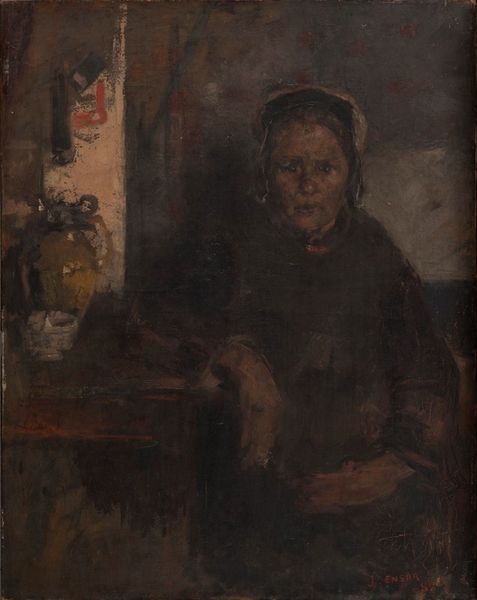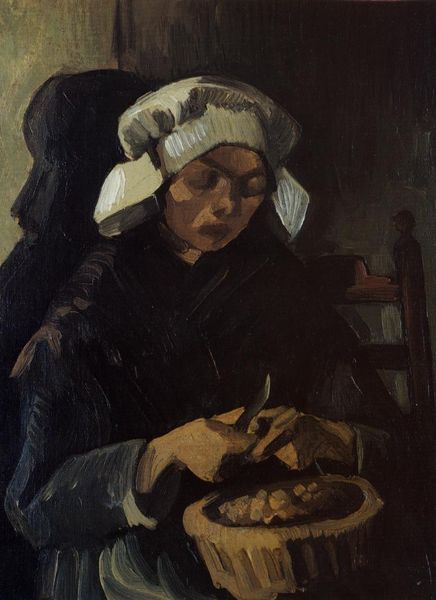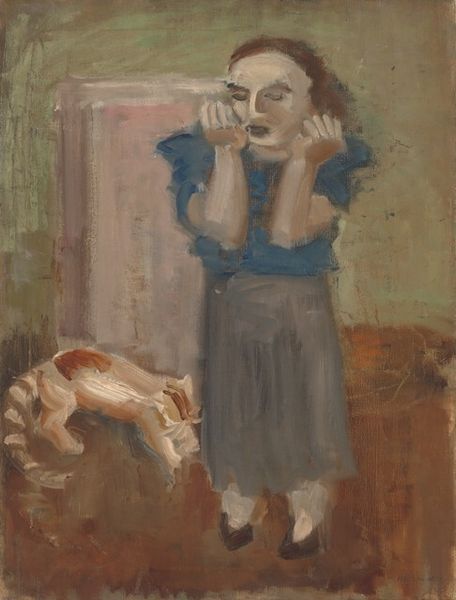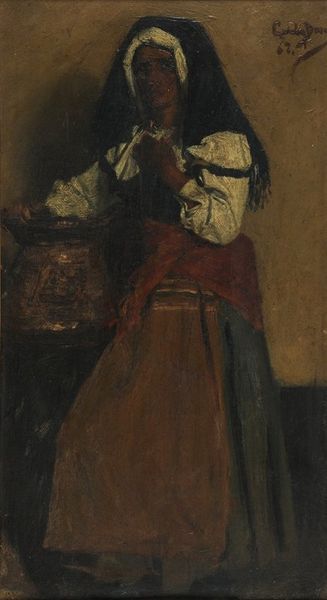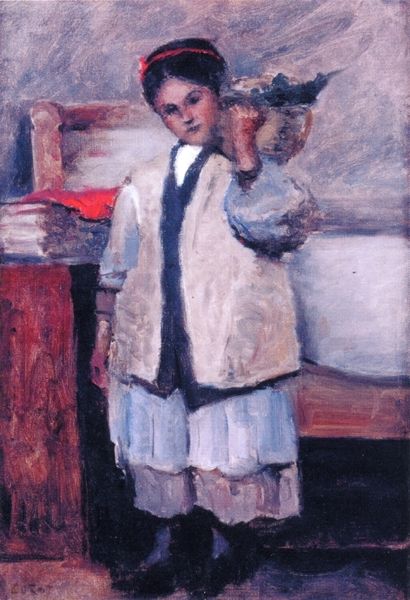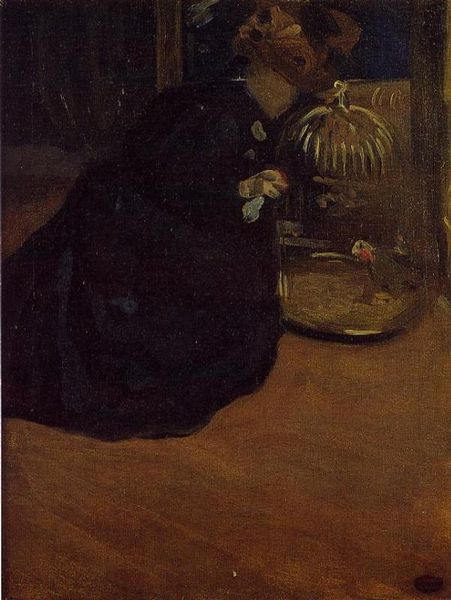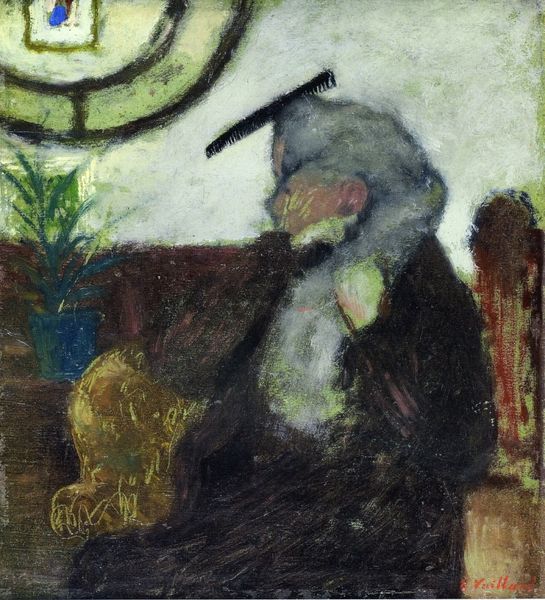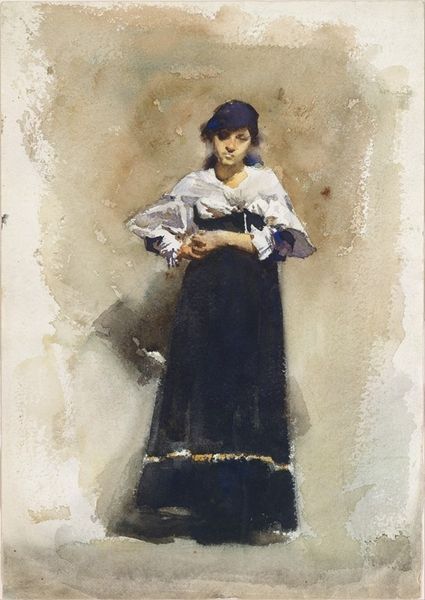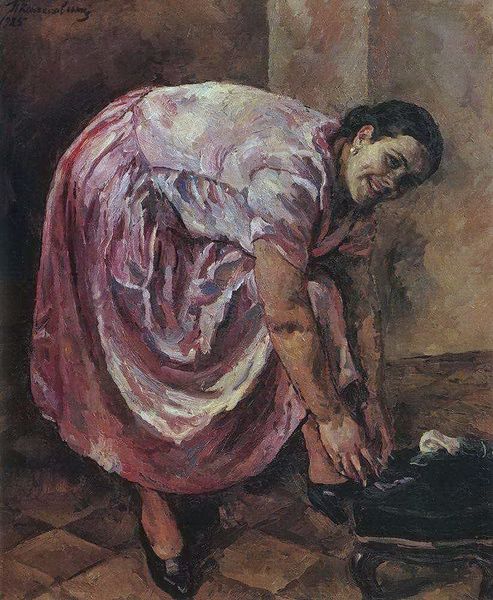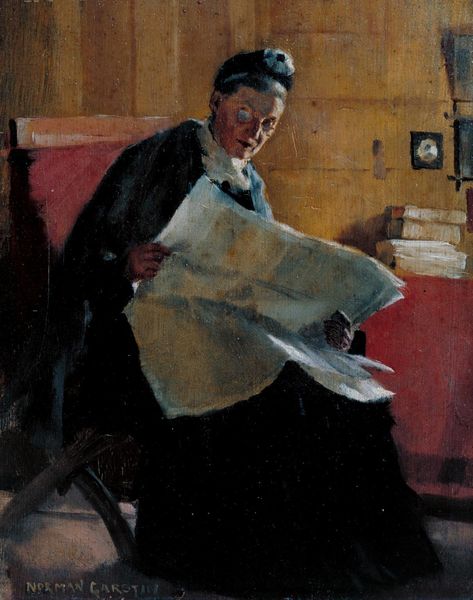
Dimensions: 697 x 128 cm
Copyright: Public domain
Editor: This is Van Gogh’s "Peasant Woman," painted in 1885. It's an oil painting, and what strikes me most is its somber, almost gothic feel. It feels constrained in a way, like she's trapped in her existence. What compositional choices stand out to you? Curator: Consider the stark, almost crude application of paint. Van Gogh's brushstrokes are deliberate, expressive marks. What does the composition, which isolates the figure within this space, tell us? Editor: It feels like he's really emphasizing the heaviness, the almost…dour quality of her life. The limited palette definitely contributes. Curator: Precisely. The palette, composed of earth tones, speaks volumes. Notice how the light seems to struggle to penetrate the gloom. It is about how formal constraints reveal underlying existential motifs. Is there a visual correlation between the subject’s expression and Van Gogh's mark-making here? Editor: I think so. The rough brushstrokes mirror her perceived hardships. And the fact that she seems to be confined by this room emphasizes her circumstances. Curator: Indeed, one might argue that Van Gogh uses the formal elements - color, brushstroke, composition - to communicate emotional weight. Does the subject’s gaze further contribute to this perceived emotional depth? Editor: Yes, definitely. The gaze, and the lighting around her face. It pulls me right in, even though it also feels like she is warning me to stay away. Thanks. I never considered the gaze and space as compositional elements carrying thematic meaning. Curator: Precisely. Van Gogh orchestrates elements on the canvas to offer a powerful social, and existential commentary. Now consider the possibilities of further readings!
Comments
No comments
Be the first to comment and join the conversation on the ultimate creative platform.
